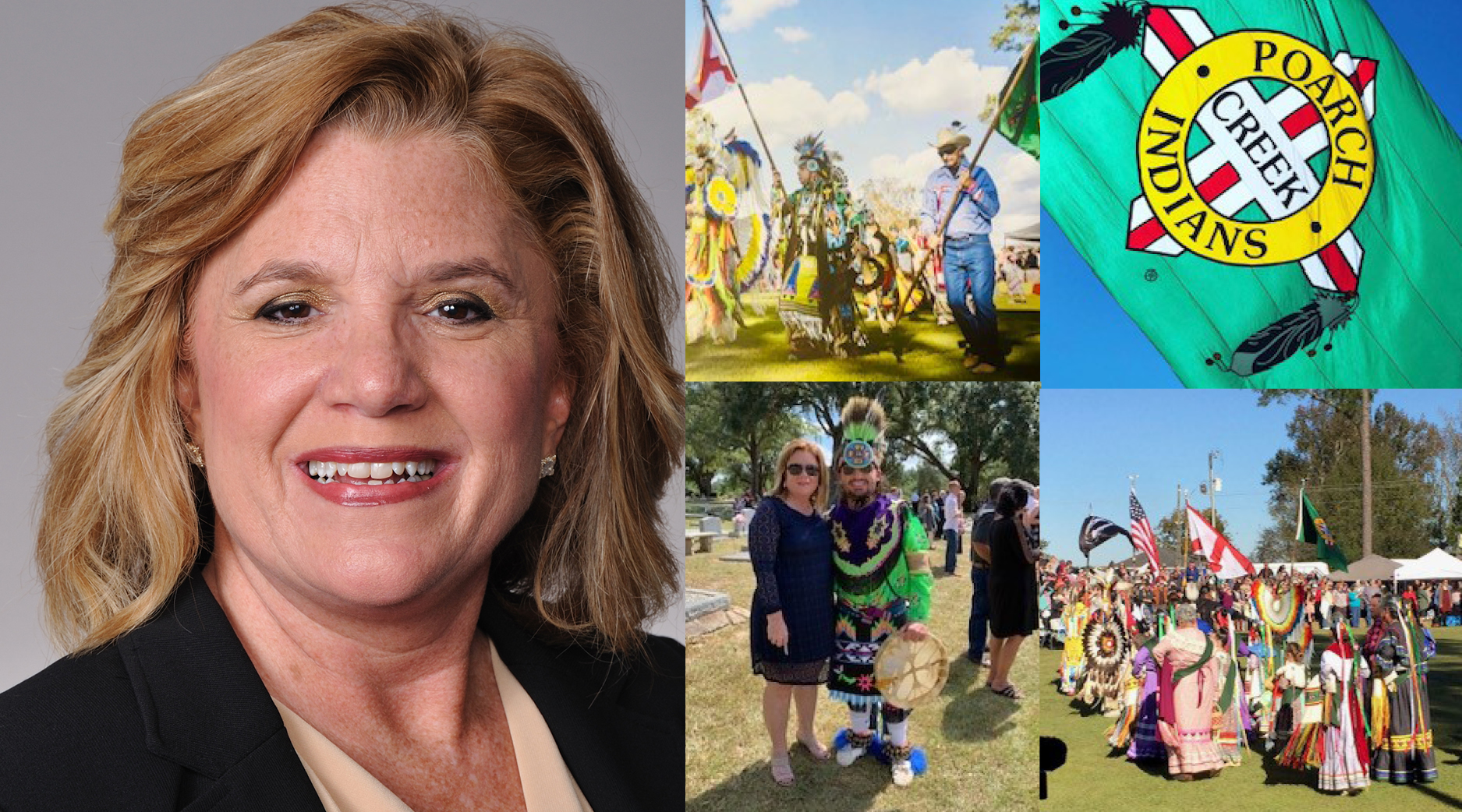By Anita Dienes, Senior Contract Manager, Managed Care
I am a member of the Poarch Band of Creek Indians, the only federally recognized Indian tribe in the state of Alabama, operating as a sovereign nation with its own system of government and by-laws.
My Ancestry
My father is Irish and my mother is Creek Indian. Most of my mother’s side of the family lives on the Poarch Creek Indian Reservation in Atmore, Alabama, about 57 miles east of Mobile.
I grew up in Destin, Florida, which is about 100 miles from Atmore and the Creek Indian Reservation. I did not grow up on the reservation, but I have always been close enough to understand how special it is to be a part of such a strong familial community.
As in many cultures, my heritage is equivalent to my identity. Within Native culture, heritage is an embodiment of ancestry.
My tribe honors its ancestors by interviewing the elders so that generations to come can hear their voices and listen to their stories. The elders of my tribe want our people to never forget where they came from and the price that was paid to bring us where we are today.
Being Native American shapes how I approach each day. Our family is foremost whether in sickness or in health.
Caring for my aging parents who were on the reservation in Alabama while I live in Tampa, Florida, was an enormous challenge for my sister and me. But, thankfully, we have a strong support system. I knew that I just had to make one phone call to a cousin, and the family would assemble to take care of anything and everything no matter the time of day or night.
When there is anyone who is sick and needs hospitalization, the waiting rooms are always packed with family who will not leave unless they are forced to leave.
Addressing Stereotypes
Poarch Band Chief Calvin McGhee, our first formal leader, did not have stereotypical Native American features. He had light skin and blue eyes. He served from 1950 until his death in 1970.
He worked diligently toward federal recognition for the tribe. Since most Americans had a preconceived notion of Indians, tribe members with darker features often accompanied him on his many advocacy trips to Washington D.C.
I, too, don’t look Native American. I have red hair and freckles.
I recently read that upon meeting Chief McGhee, President John F. Kennedy remarked, “I’ve never seen a blue-eyed Indian before.”
“You’ve seen one now!” Chief McGhee replied.

He worked toward equality and recognition of the Poarch Creek Indians. I am proud that he broke stereotypes, and I am proud to be a red-headed Indian!
Recognizing National Native American Heritage Month
National Native American Heritage Month, also referred to as American Indian and Alaska Native Heritage Month, is a celebration and remembrance during November. It is a chance to bond with our community. It’s also an opportunity to share and educate about our culture. National Native American Heritage Month also helps raise awareness of the challenges and hardships faced by Native peoples.
One of the longest standing traditions we have is the annual Poarch Creek Thanksgiving Powwow. Each year, around 10,000 people attend the powwow. It has been canceled for the past few years due to COVID-19, but it will resume this Thanksgiving. The powwow is a homecoming for tribal members as well as an opportunity to share tradition and reconnect to culture. The events include ancestral dance competitions in authentic dress, drum competitions, unique crafts from other tribal nations, and delicious food, including fry bread. Fry bread has an emotional and historical significance representing meager supplies to prevent starvation. The supplies of flour and lard create fry bread, which is a large, fluffy, plate-size piece of fried dough.
Diversity, Equity and Inclusion at TeamHealth
I am proud to celebrate National Native American Heritage Month at TeamHealth. I witness diversity every day at work. I welcome every opportunity to learn more about the people that I work with to discover who they are, their heritage and their world view.
By focusing on the contributions and challenges of Native people both historically and in the present, we can identify ways to promote diversity, equity and inclusion.
Learn more about TeamHealth’s culture of diversity, equity and inclusion here.
